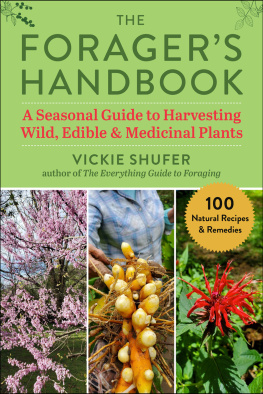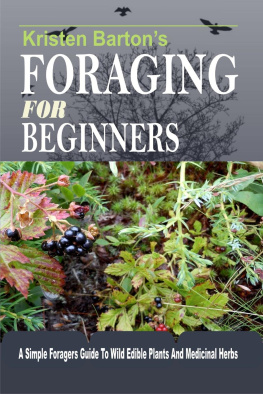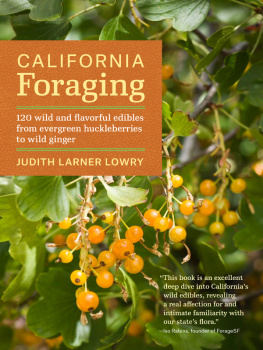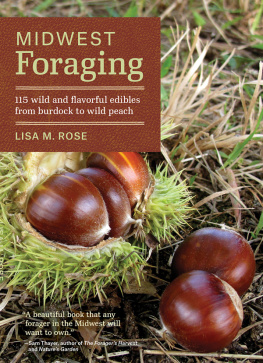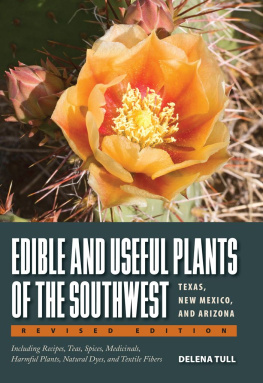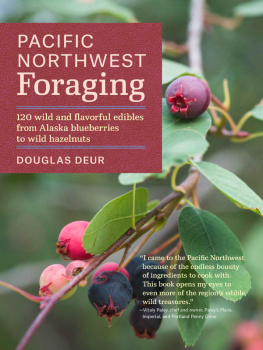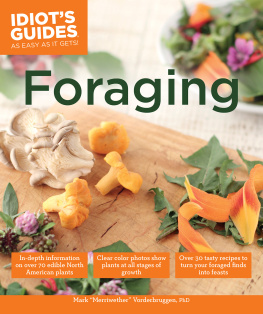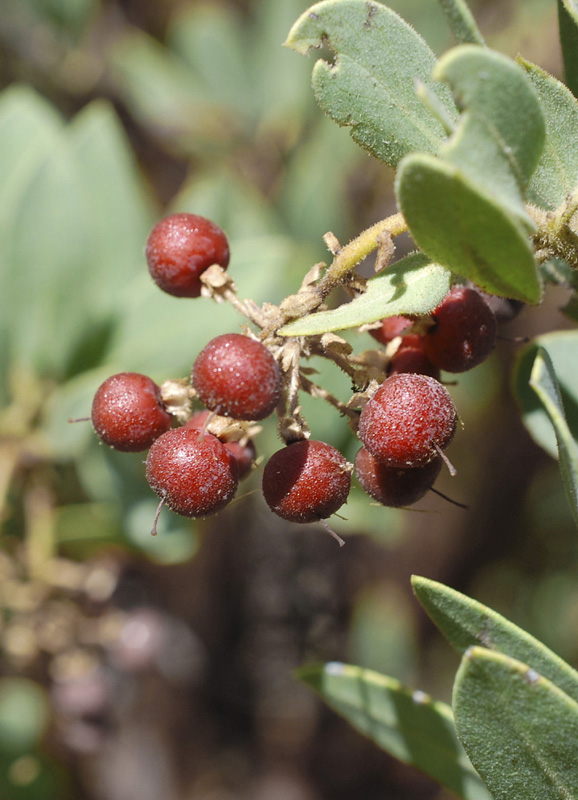
SOUTHWEST
Foraging

117 wild and flavorful
edibles from barrel cactus
to wild oregano

JOHN SLATTERY
TIMBER PRESS
Portland, Oregon
Frontispiece: Manzanita berries are among the Southwests favorite foraged edibles.
Copyright 2016 by John Slattery. All rights reserved.
Published in 2016 by Timber Press, Inc.
.
The information in this book is true and complete to the best of our knowledge. All recommendations are made without guarantee on the part of the author or Timber Press. The author and publisher disclaim any liability in connection with the use of this information. In particular, eating wild plants is inherently risky. Plants can be easily mistaken and individuals vary in their physiological reactions to plants that are touched or consumed.
The Haseltine Building
133 S.W. Second Avenue, Suite 450
Portland, Oregon 97204-3527
timberpress.com
Cover design by Benjamin Shaykin
eISBN: 978-1-6046-9770-4
Library of Congress Cataloging-in-Publication Data
Names: Slattery, John, 1974- author.
Title: Southwest foraging: 117 wild and flavorful edibles from barrel cactus to wild oregano / John Slattery.
Description: Portland, Oregon: Timber Press, 2016. | Includes bibliographical references and index.
Identifiers: LCCN 2015047857 | ISBN 9781604696509 (pbk.: alk. paper)
Subjects: LCSH: Wild plants, EdibleSouthwestern States.
Classification: LCC QK98.5.U6 S53 2016 | DDC 581.6/320979dc23 LC record available at http://lccn.loc.gov/2015047857
To all the indigenous peoples of the land we now call the Southwest, and their legacy of plant knowledge which has carried on.
Contents
Preface
Land of Abundant Beauty
My path to wild plant foods is perhaps different than most. The idea of there being desirable, useful, or easy-to-find wild plant foods was not part of my upbringing. However, I strongly gravitated toward the use of local plants as medicine while traveling for a year throughout Central and South America. Meeting with indigenous healers and herbalists throughout this journey, I began to appreciate the concept of developing relationships with plantsnot just herbs as a capsule, tincture, or other product to be purchased off the shelf.
This was one experience among many that opened my eyes and heart to what was available. Although my interest in wild plant foods and wild plant medicines occurred simultaneously, foraging initially took a backseat to botanical medicine. At first, I saw the pursuit of wild foods as a survival technique, a way to live as people once lived long ago. With limited opportunities to explore this style of living, I wasnt implementing many wild foods into my diet other than major foods such as mesquite meal, cholla buds, saguaro fruit, prickly pear fruit, and palo verde beanscertainly more exotic ingredients than the average person employs, but I wanted these foods to become an even bigger part of my life. I began adding them to my diet in novel and unconventional ways, parting with the traditions I had learned, and fueling my passion for wild foods with my creative impulse to cookan impulse Ive had since childhood. New creations were popping into my mind as they once did with cultivated foods. I was grinding barrel cactus seeds for flour to make bread or cooking its fruit into a chutney; combining flowering stems of wild plants to make sauerkraut; frying mesquite-breaded New Mexico locust blossoms with cinnamon in butter, topped with saguaro syrup. My perspective had shifted!
I was not alone in this new viewpoint. It seems there has been an increased interest in this direction for a certain segment of our population, and the enthusiasm continues to grow. Of course, its far from accurate to characterize this trend as new. Mesquite pods, prickly pear pads and fruit, chia seeds, amaranth greens, and other superfoods have all been part of the local cuisine in the southwestern United States for thousands of years. The region, with its tremendously varied terrain, flora, and fauna, and its rich cultural tradition of interaction with the land, has the longest continual history of agriculture within our nation4000 years in Tucson, Arizona. And wild plant foods, prized for their dense nutrition and rich dietary attributes (not to mention their unique and delicious flavors) have long been widely known across the globe, cherished by foragers, and often cultivated wherever they have taken root. The people here gathering wild foods to complement their daily diets are both new converts and the most recent generation of a long ancestral chain.
If you have not foraged for your food, you have not yet fully lived on this Earth. Becoming fully engaged with ones senses, engaging with other life-forms as one walks across the land for the purpose of sustenance, for satiating a taste, could quite possibly encapsulate what it means to be human. Foraging is our birthright, if not our responsibility, in a sense. How else can we better take account of our home, and our surroundings, as we engage with the life around us?
To those who have yet to become acquainted with our beautiful region, I invite you to discover the culinary riches that abound in the deserts, plains, forests, and mountains of the Southwest. To those who live within this area of abundant beauty, I urge you to explore more deeplyto join me on this natural path, to delight in gathering the wild foods that await.

Firethorn, resplendent with fruit.
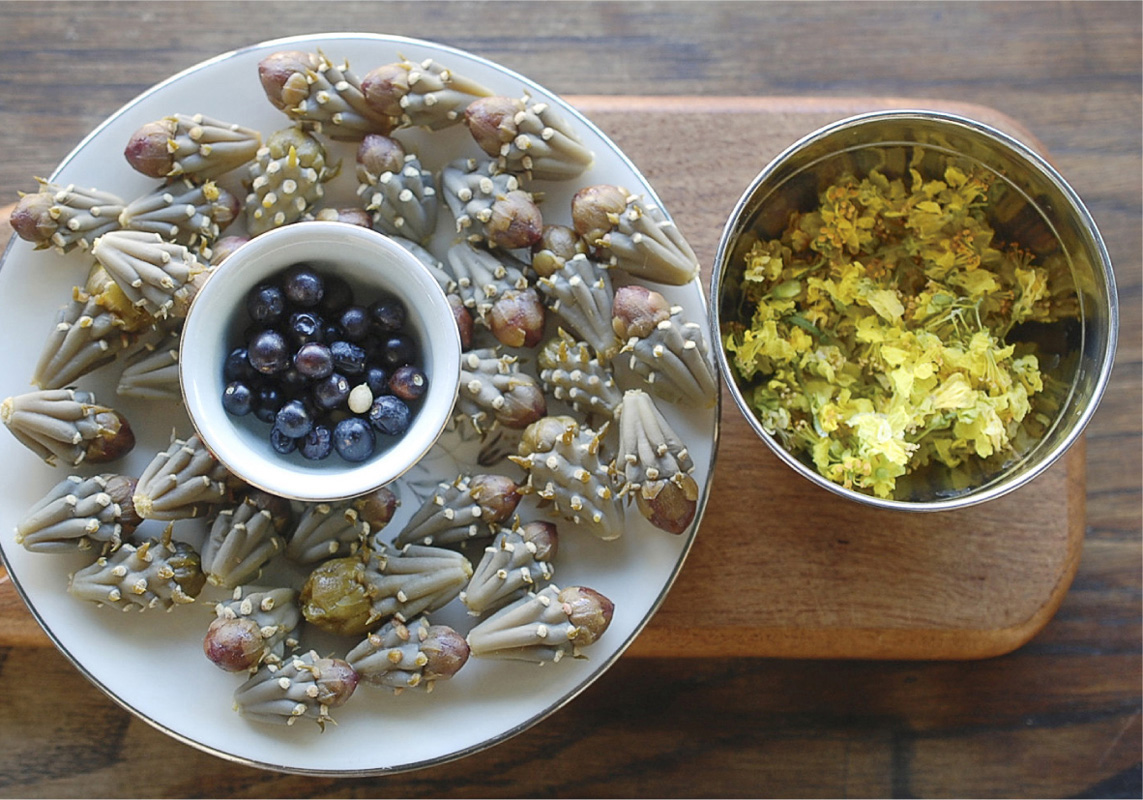
Early spring harvest: cholla buds, graythorn berries, and blue palo verde blossoms.
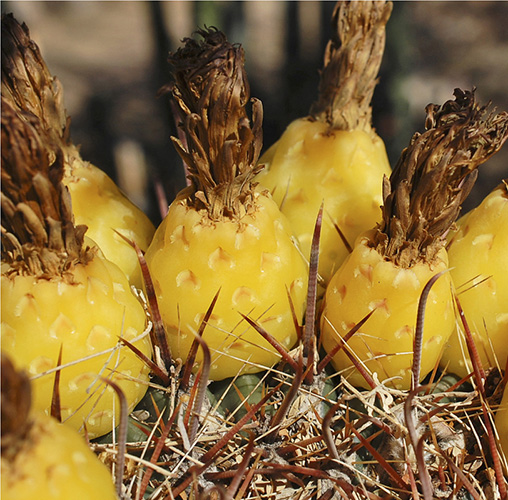
A spiral of barrel cactus buds emerge in the midsummer heat.
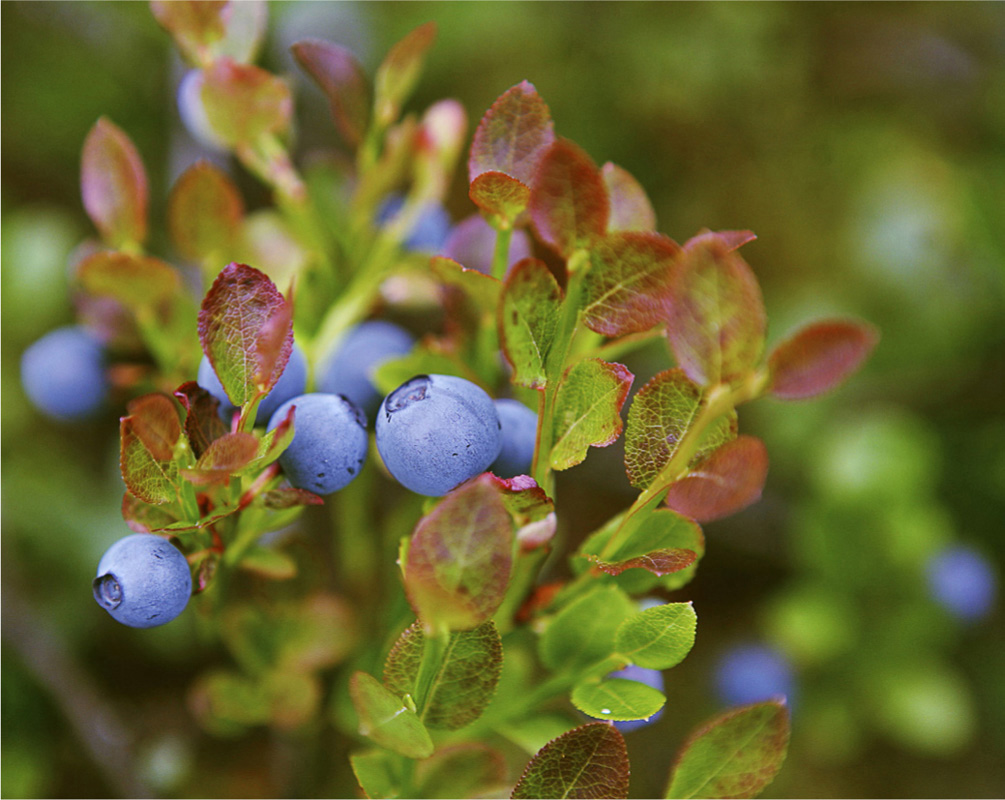
Whortleberrys sweet-tart fruit is a foraging favorite.
Foraging in the Southwest: A Wild Path of Discovery

Blooming ocotillo and cacti of many shapes and sizes are familiar Southwest sights.
This guide focuses on the wild plants that foragers may encounter throughout the Southwest region. It encompasses the states of Arizona, New Mexico, Oklahoma, Texas, and southern Utah and Nevada. Although this region can be collectively referred to as the Southwest, there is a great diversity of habitats therein. Plant communities are differentiated by a host of conditions, including sun exposure, soil type, latitude, elevation, rainfall, and other defining influences. In the Southwest, these plant communities overlap frequently, thus making new, unique localized communities, or ecozones, enriching the local habitat and making for greater diversity among all life-forms present. Although one will find a greater density of vegetation in other regions of the country, the biodiversity of the Southwest is in many ways unrivaled on this continent. This presents tremendous possibilities as one explores the terrain, observing the plants as they change from season to season. Each step of a foraging adventure offers an opportunity to deepen our relationship with place, to hone our awareness of self. Our lives are interwoven with all living things on Earth.
Next page

